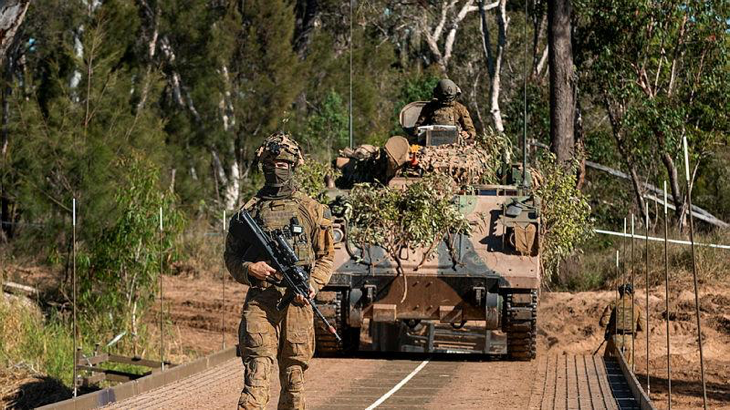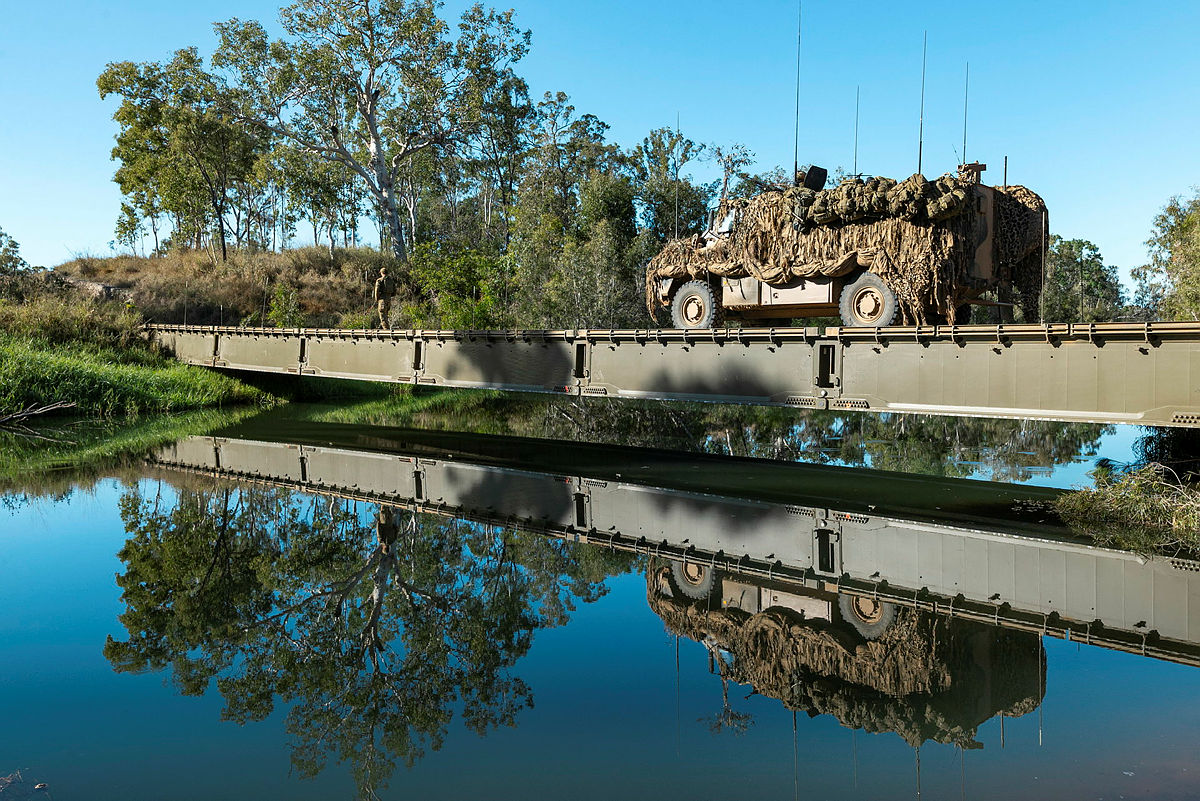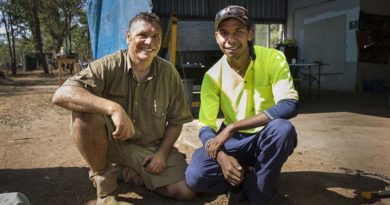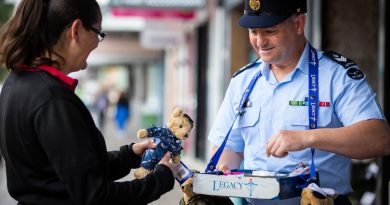River crossing a first for division

Advancing south through the Townsville Field Training Area as part of the 1st Australian Division, 7th Brigade reconnaissance assets identified a lack of routes to resupply their battle groups, or to evacuate casualties should significant damage be inflicted to their forces.
CAPTION: An Australian sapper from 2nd Combat Engineer Regiment guides an M113 armoured personnel carrier over the new dry support bridge during Exercise Talisman Sabre 2023. Story by Major Roger Brennan. Photos by Corporal Nicole Dorrett.
It was one of the many activities conducted during Exercise Talisman Sabre.
Commander 7th Brigade Brigadier Michael Say said reconnaissance had also located potential river-crossing sites that if bridged would open lateral routes to support two axes of brigade advance.
“Engineers constructed a dry support bridge across Keelbottom Creek,” Brigadier Say said.
“This enabled sustainment and evacuation routes … but to keep moving south we required another lateral to be opened and for the Fanning River to be bridged.
“This is the first time, in my career, where a divisional river crossing was part of our manoeuvre – with 3rd Brigade securing the far bank and 7th the near.”
The ambitious task allowed for Battle Group Warhorse with a Boxer, Australian light armoured vehicle and their rear echelon, to cross the river and move into a guard, while follow-on forces secured an assembly area.
“The 1st Australian Division’s control measures were tested,” Brigadier Say said.
“Command and control, fires and sustainment functions are critical to enabling our forces to successfully cross the river.
“The crossing requires a significant amount of coordination and synchronisation to ensure opposition forces can’t deny our ability to construct the bridge.”
While the higher headquarters functions are critical in enabling crossings of this size, engineers worked through the night to maintain the brigade’s tempo.
Combat engineer Lance Corporal Michael Forbes, who secured the first lateral crossing, said a section of soldiers could get the rear echelons moving in as little as four or five hours.
“Dry support bridges are quick to construct and remove … and we only require a small footprint of soldiers to open lines of communication to the front,” Lance Corporal Forbes said.
“The difficulty is working in the dark under night vision, where depth of perception is challenged and crush injuries become a possibility.
“Gap crossings always come with challenges and it’s our job to overcome them and make it work.”
CAPTION: An Australian Army Bushmaster protected mobility vehicle crosses the dry support bridge from the 2nd Combat Engineer Regiment.
.
.

.
.






